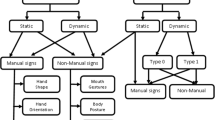Abstract
In this article, we describe the OCR and image processing algorithms used to read destination addresses from non-standard letters (flats) by Siemens postal automation system currently in use by the Deutsche Post AG1.
We first describe the sorting machine, its OCR hardware and the sequence of image processing and pattern recognition algorithms needed to solve the difficult task of reading mail addresses, especially handwritten ones. The article concentrates mainly on the two classifiers used to recognize handprinted digits. One of them is a complex time delayed neural network (TDNN) used to classify scaled digit-features. The other classifier extracts the structure of each digit and matches it to a number of prototypes. Different digits represented by the same graph are then discriminated by classifiying some of the features of the digit-graph with small neural networks.
We also describe some approaches for the segmentation of the digits in the ZIP code, so that the resulting parts can be processed and evaluated by the classifiers.
Similar content being viewed by others
References
J. Sch¨urmann, Pattern Classification—A Unified View of Statistical and Neural Approaches, Wiley-Interscience: New York, 1996.
R. Fenrich, S. Lam, and S.N. Srihari, “Optical character readers,” in Encyclopedia of Computer Science and Engineering, 3rd edn., edited by A. Ralston, Van Nostrand, pp. 993–1000, 1992.
P.W. Palumbo, P. Swaminathan, and S.N. Srihari, “Document image binarisation: An evaluation of algorithms,” in Proceedings of the SPIE Symposium on Applications of Digital Image Processing IX, vol. 697, 1986, pp. 278–295.
Adaptive Solutions Inc. Beaverton OR, 1992. CNAPS Manual.
M. Pfister, “Learning algorithms for feed-forward neural networks—Design, combination and analysis,” Ph.D. Thesis, FU Berlin, 1995.
M. Wolf, H. Niemann, and W. Schmidt, “Fast address block location on handwritten and machine printed mail-piece images,” in Proceedings of the ICDAR '97, Ulm/Germany, 1997, pp. 753–757.
M. Wolf and H. Niemann, “Form-based localization of the destination address block on complex envelopes,” in Proceedings of the ICDAR '97, Ulm/Germany, 1997, pp. 908–913.
N. Otsu, “A threshold selection method from greylevel histograms,” IEEE Transactions on Man, Systems and Cybernetics, vol. 9, no. 1, pp. 62–66, 1997.
H. Niemann, Klassifikation von Mustern, Springer: New York, 1983.
J. Franke and M. Oberl¨ander, “Writing style detection by statistical cobmination of classifiers in form reader applications,” in Proceedings of the ICDAR '93, Tsukuba Science City/Japan, 1993, pp. 581–584.
P.J. Grother and G.T. Candela, “Comparison of handprinted digit classifiers,” Technical Report NISTIR 5209, NIST, 1993.
L. Holmstr¨om, P. Koistinen, and E. Oja, “Comparison of neural and statistical classifiers—Theory and Practice,” Research Report A13, University of Helsinki, Finnland, 1996.
A. Waibel et al., “Phoneme recognition using time-delay neural networks,” IEEE Transactions on Acoustics, Speech and Signal Processing, vol. 37, no. 3, pp. 328–339, 1989.
R. Rojas, Neural Networks, Springer: New York, 1996.
S. Behnke, M. Pfister, and R. Rojas, “Astudy on the combination of classifiers for handwritten digits recognition,” in Proceedings of the 3rd InternationalWorkshop on Neural Networks in Applications NN '97, Magdeburg/Germany, 1998.
M.D. Garris et al., “NIST form-based handprint recognition system,” NIST Internal Report 5959, 1994.
S. Behnke, M. Pfister, and R. Rojas, “Recognition of handwritten digits using structural information,” in Proceedings of the ICNN '97, Houston/Texas, 1997.
S. Fahlmann and C. Lebiere, “The cascade correlation learning algorithm,” Technical Report CMU-CS–90–100, Carnegie Mellon University, 1990.
R.G. Casey and E. Lecolinet, “Asurvey of methods and strategies in character segmentation,” IEEE Transactions on Pattern Analysis and Machine Intelligence, vol. 18, no. 7, pp. 690–706, 1996.
L. Shastry and T. Fontane, “Recognizing handwritten digit strings using modular spatio-temporal connectionist networks,” Connection Science, vol. 7, no. 3, 1995.
R. Fenrich, “Segmentation of automatically located handwritten words,” in Proceedings of International Workshop on Frontiers of Handwriting Recognition, Bonas, France, September 1991.
R. Fenrich, “Segmentation of diverse quality handwritten digit strings,” Sixth Annual University at Buffalo Graduate Conference on Computer Science, March 18, 1991, pp. 1–9.
R. Fenrich, “Segmentation of automatically located handwritten numeric strings,” in From Pixels to Features III, edited by Sebastiano Impedovo and J.C. Simon, pp. 47–60, 1992.
Y. Linde, A. Buzo, and R.M. Gray, “An algorithm for vector quantizer design,” IEEE Transactions on Communications, vol. 28, no. 1, pp. 84–95, 1980.
L.A. Rabiner, “Atutorial on hidden Markov models with selected applications in speech recognition,” in Proceedings of the IEEE, vol. 77, no. 2, 1989.
A. Williams Senior, “Offline cursive handwriting recognition using recurrent neural networks,” Ph.D. Thesis, Trinity Hall, Cambridge/England, 1994.
M. Sch¨ußler and H. Niemann, “Asystem for reading handwritten addresses,” Accepted at the 6th International Workshop on the Froniers of Handwriting Recognition, Taejon City/Corea, 1998.
H. Bunke, M. Roth, and E.G. Schukat-Talamazzini, “Offline cursive handwriting recognition using hidden markov models,” Pattern Recognition, vol. 28, no. 9, pp. 1399–1412, 1995.
A. Kaltenmeier et al., “Sophisticated topology of hidden markov models for cursive script recognition,” in Proceedings of the ICDAR '93, Tsukuba, 1993.
P. Simard, Y. LeCun, and J. Drucker, “Improving performance in neural networks using a boosting algorithm,” Advances in Neural Information Processing Systems, vol.5, pp. 42–49, 1993.
Author information
Authors and Affiliations
Rights and permissions
About this article
Cite this article
Pfister, M., Behnke, S. & Rojas, R. Recognition of Handwritten ZIP Codes in a Real—World Non-Standard-Letter Sorting System. Applied Intelligence 12, 95–115 (2000). https://doi.org/10.1023/A:1008316121543
Issue Date:
DOI: https://doi.org/10.1023/A:1008316121543




